The new Premier League season kicked off with high hopes for fans all across the country, with Tottenham and Aston Villa being no exception to this. Spurs hosted newly-promoted Villa in their first game of the season at their spanking new stadium, with both sides hoping to scale greater heights in this campaign. Mauricio Pochettino and his Spurs side finally got some much-needed reinforcement over the summer, with the signings of Tanguy Ndombele, Giovani Lo Celso and Ryan Sessegnon providing quality and quantity, while Aston Villa brought in a whopping 12 players and spent over £130 million. Dean Smith was quick to play down any comparisons with Fulham, who went on a similar shopping spree upon promotion last season and were then relegated, but Villa will have to hit the ground running in an extremely competitive division. As for Spurs, Pochettino will hope that his side can now maintain a sustained challenge for the title.
This tactical analysis piece will look at the tactics employed by both sides.
Lineups
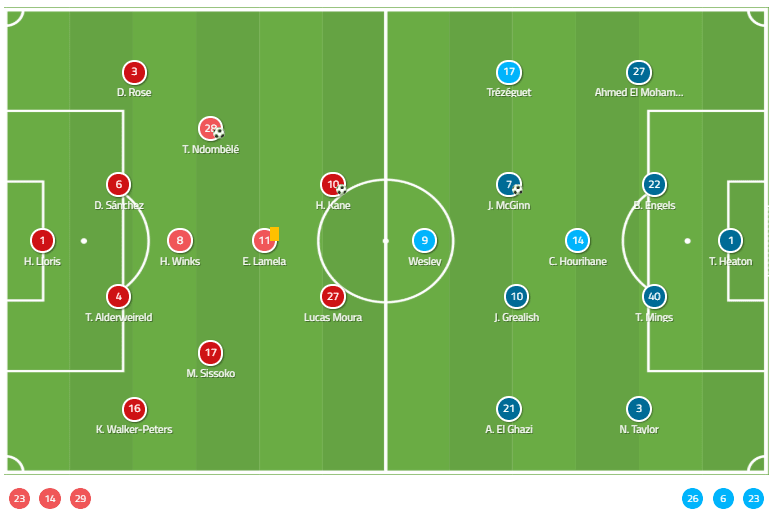
Spurs lined up with a diamond in midfield with Harry Winks at the base, Ndombele and Moussa Sissoko at the sides and Erik Lamela at the tip. Lucas Moura and Harry Kane played as the two forwards, while Kyle Walker-Peters started at right-back after the sale of Kieran Trippier to Atletico Madrid. Christian Eriksen was only on the bench, with Jan Vertonghen being left out entirely.
Dean Smith sent his side out in his usual 4-1-4-1 system. New signing Wesley was the lone striker, with debuts also given to Trézéguet, Bjorn Engels and Tom Heaton.
Villa defend deep and counter-attack
In an expected move, Aston Villa sat deep and looked to deny Spurs any space between the lines from the beginning of the match. The Villa midfield dropped deep in support of the defensive line, with the Clarets attempting to stay compact and narrow.
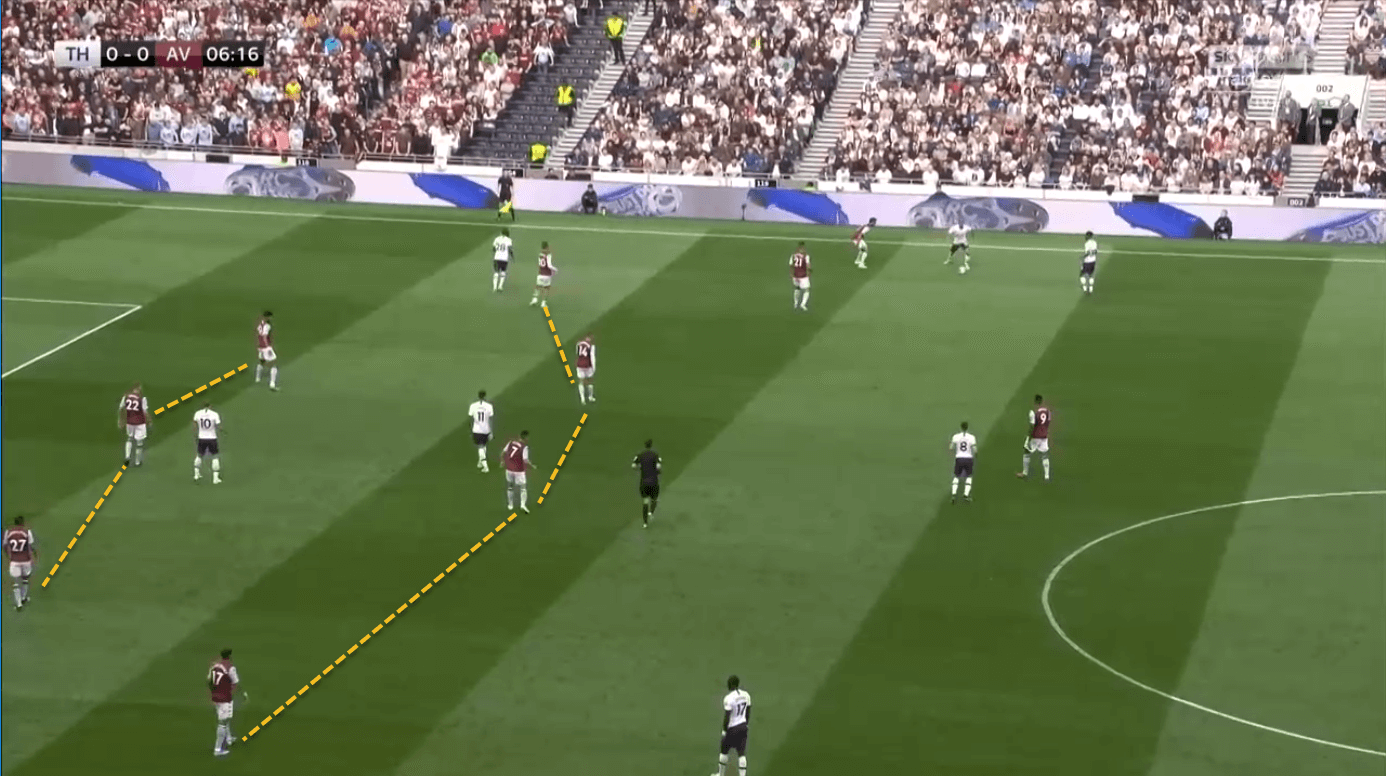
This should not have come as a surprise though, as Dean Smith regularly set his side up in a similar fashion last season in the Championship as well. Villa were excellent off the ball, shutting down passing lanes centrally and forcing Spurs to go out wide in search of space. The home side played into Villa’s hands as well though, by not having any sort of vertical movement to try and break through the lines. Their passing was extremely slow as well, giving Villa time to get back in their defensive shape after a turnover in possession.
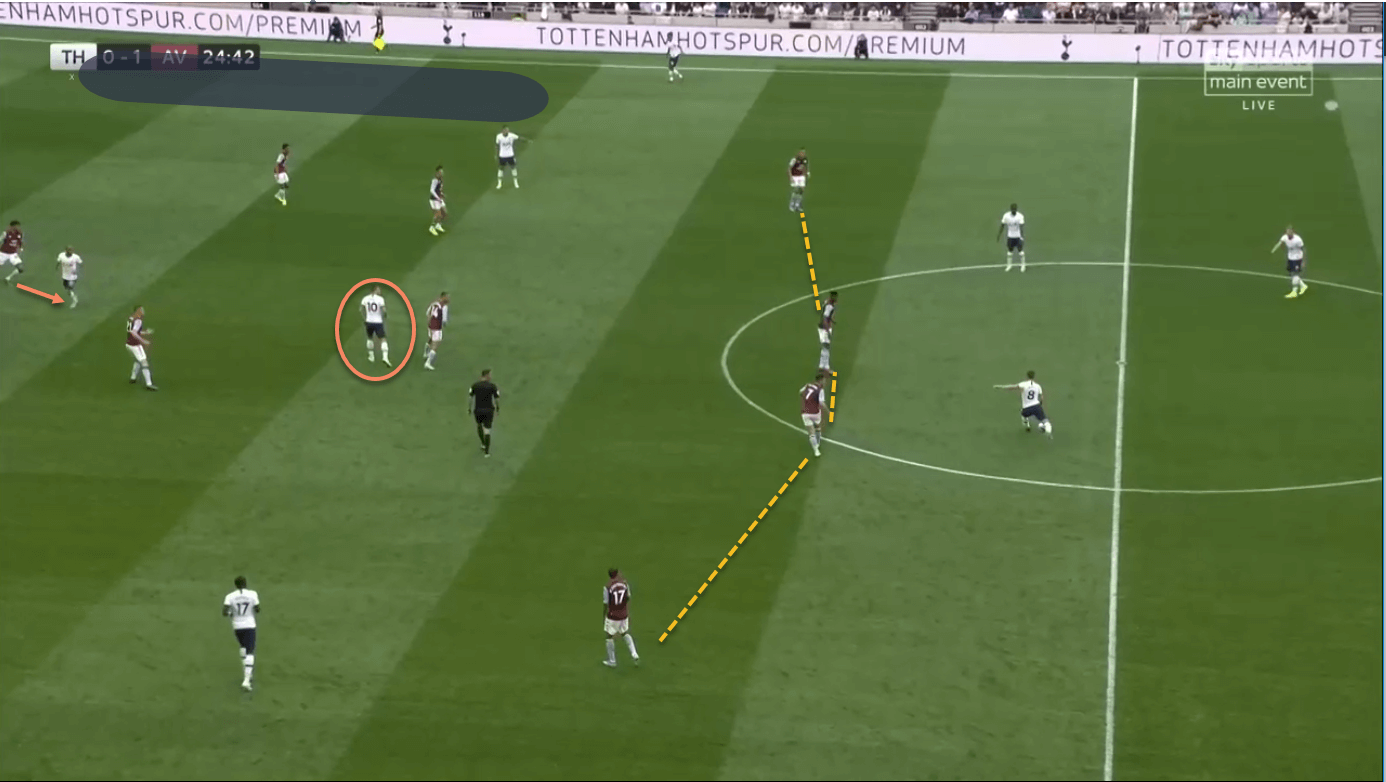
Villa’s deep defensive block drew Spurs forward and allowed the away side to hit them on the counter-attack, albeit sporadically. The opening goal, scored by John McGinn, came as a direct result of Spurs’ high line –
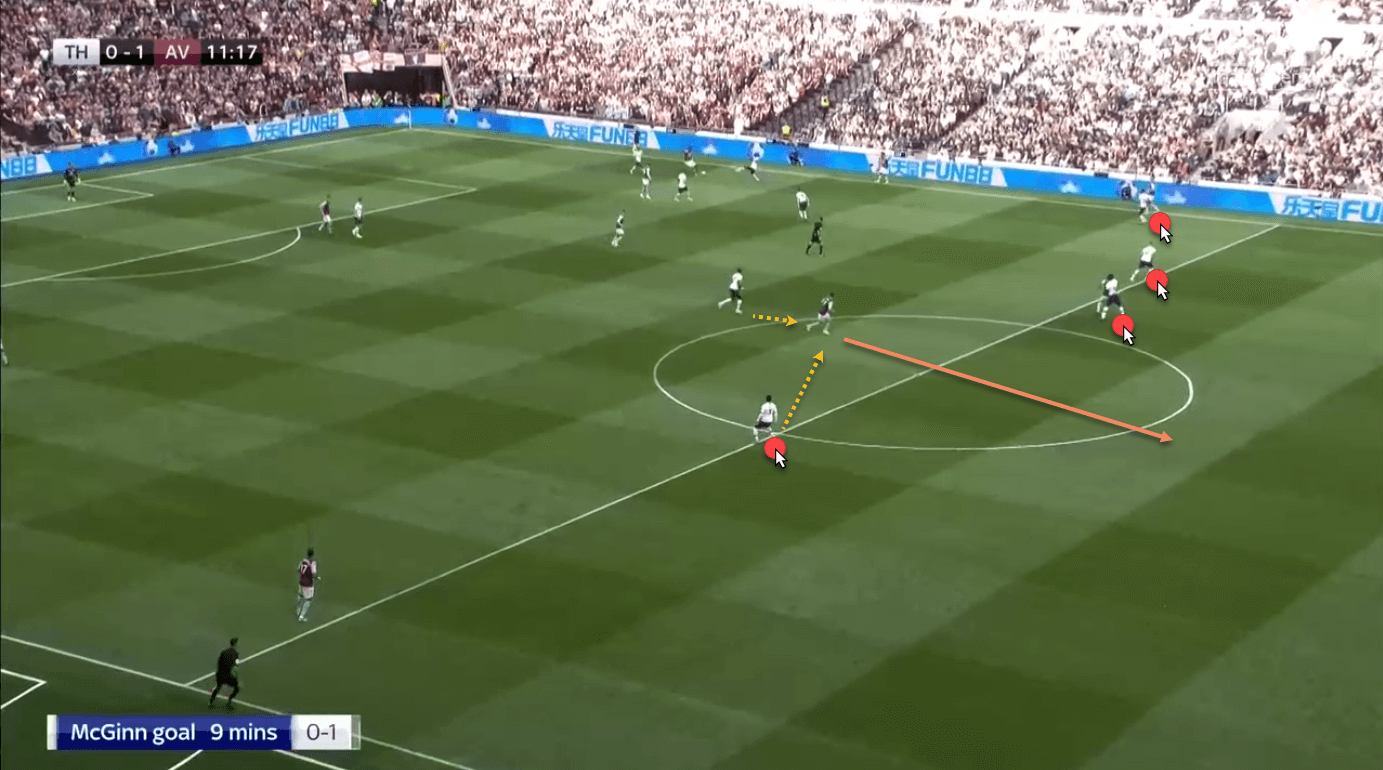
Villa had a few more chances on the counter-attack in the first half, but could not extend their lead. Nevertheless, their defensive performance was excellent, and Spurs were left frustrated for the majority of the match.
Spurs’ lack of dynamism
Pochettino’s side contributed to their own problems, though. As mentioned previously, Spurs were passive, with little movement beyond the defensive lines. This was unexpected, with Sissoko and Ndombele expected to provide line-breaking runs from midfield. However, the majority of Spurs’ play was in front of the Villa defence, and the slowness of their passing meant that the Clarets were rarely pulled out of shape.
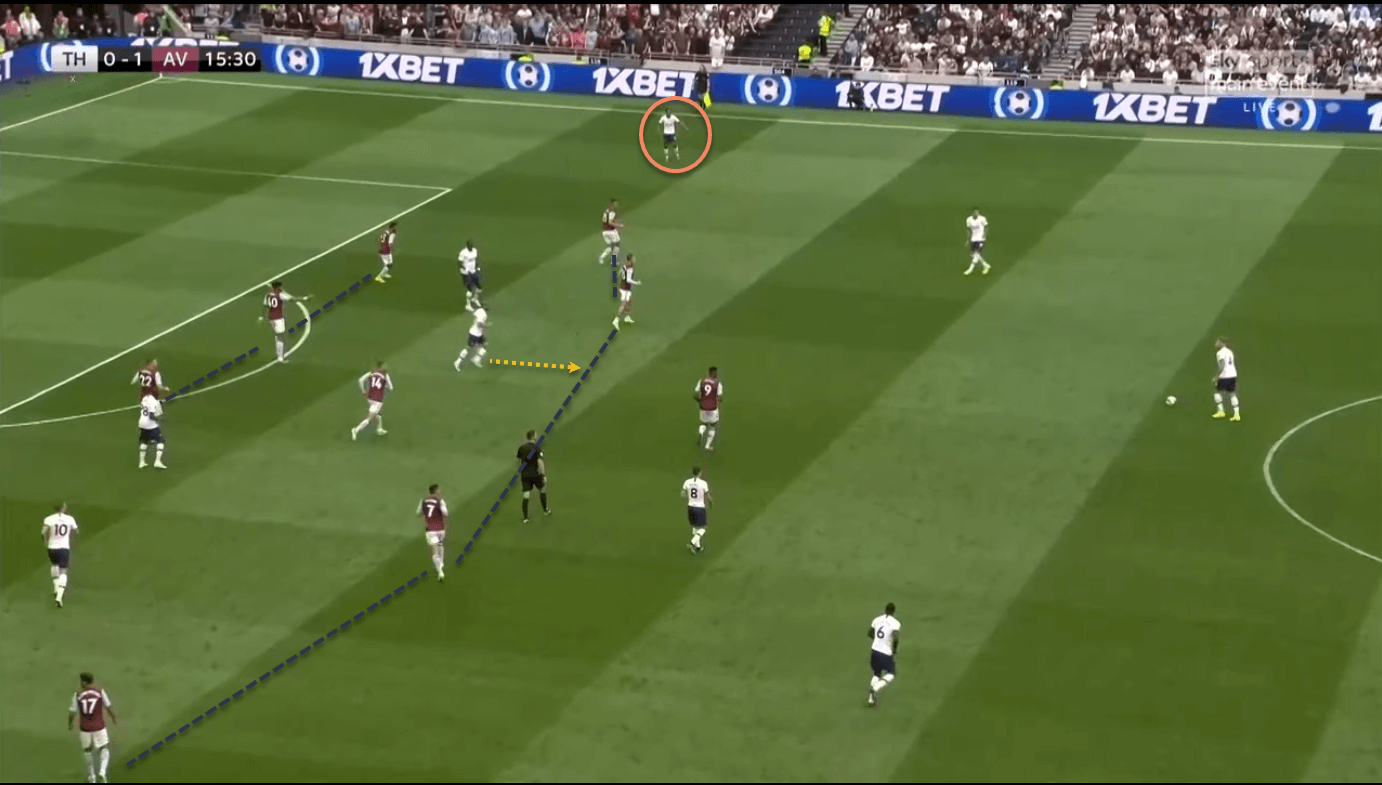
It seemed as if the home side were suffering in the absence of Son Heung-min and Christian Eriksen. The South Korean offers the kind of speed and vertical movement that was sorely lacking on the day, while Eriksen has the necessary intelligence and guile to pick up positions in space between the lines. Son was suspended; however, Eriksen was on the bench, perhaps in response to the transfer speculation that has followed him all summer. Nevertheless, their absence was hurting Spurs –
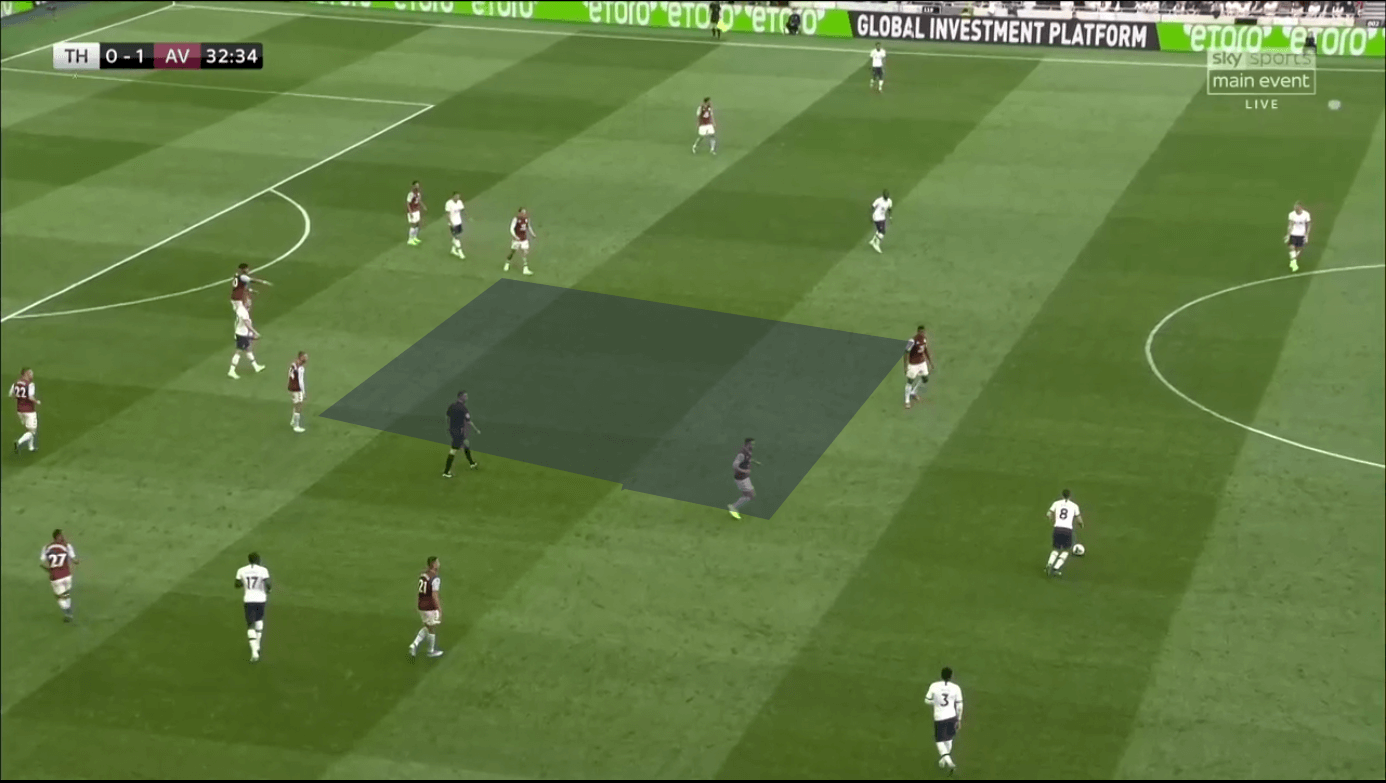
As the image above shows, Spurs struggled to pick up positions between the lines, with the result that Villa found it easy to defend against them. Villa were rarely forced to break their defensive structure, and the home side struggled till Eriksen’s introduction in the second half.
Eriksen’s impact
The Dane came on for Harry Winks in the 64th minute and had an immediate impact on the game. Suddenly, Spurs were moving the ball around at a much quicker tempo, and Eriksen was finding space between the Villa defensive lines which was pulling them out of position.
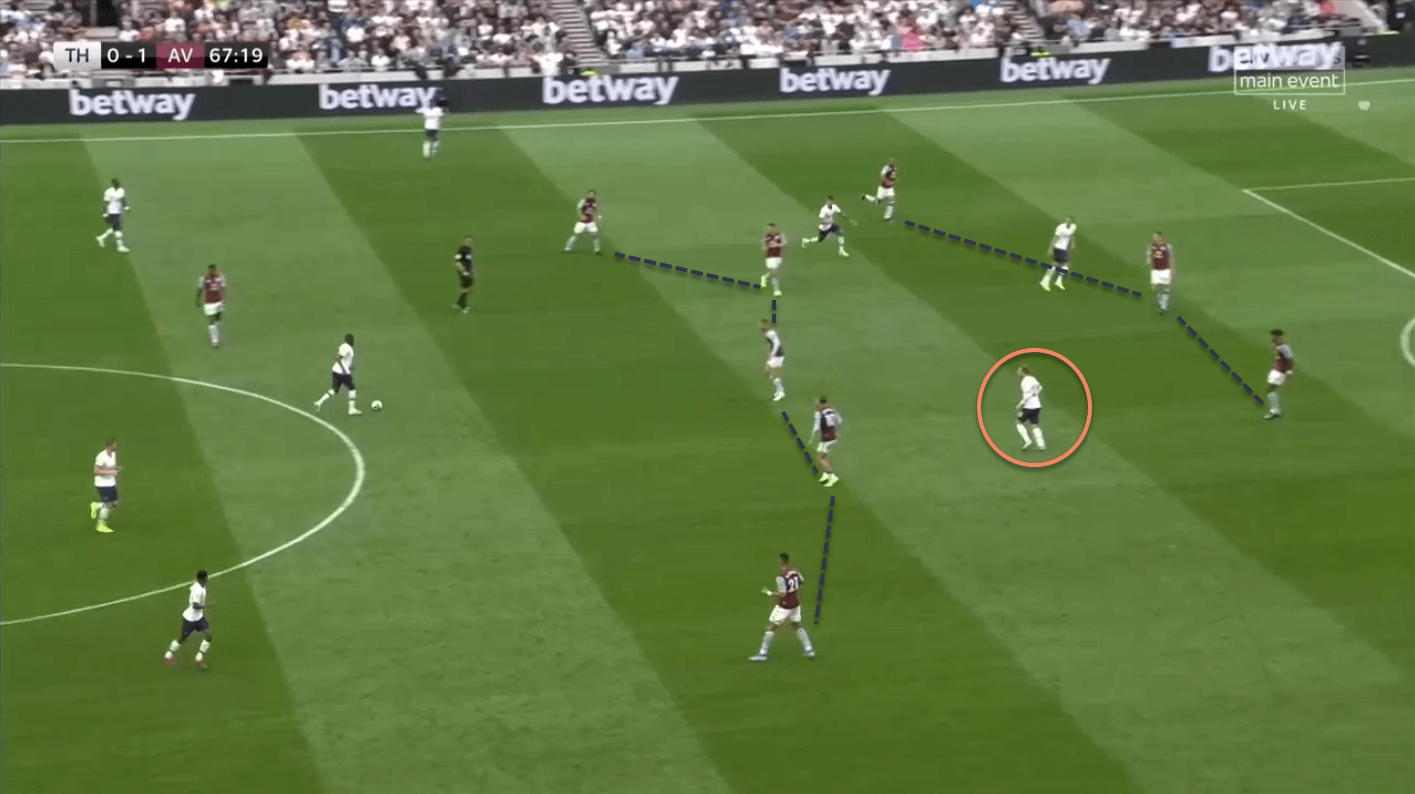

As the earlier images showed, Spurs were struggling to get into these sort of positions in the first half, despite having Erik Lamela playing as the nominal number 10. The Argentinian was taking up positions in wide areas instead of trying to play centrally, which was remedied when Eriksen came on. Instead of Spurs having to play the ball out wide to try and bypass the Villa block, they now had a passing option centrally which would disrupt their opponents’ defensive structure.
While Eriksen did not have a direct hand in any of Spurs’ goals, his presence meant that the home side’s speed of passing improved and this allowed them to create more openings.
Conclusion
As this analysis showed, Spurs may have ultimately won by a two-goal margin, but the actual match was a lot closer. They struggled to break down an organized Villa side and Christian Eriksen’s importance was showcased by his absence, as well as the impact he had off the bench. Villa were impressive and should be able to cause a few upsets this season if they manage to maintain their defensive organization. Spurs, on the other hand, will need to come up with solutions to their lack of creativity; however, with Eriksen, Alli and Son available, as well as Lo Celso and Sessegnon, those solutions may be near at hand.

If you love tactical analysis, then you’ll love the digital magazines from totalfootballanalysis.com – a guaranteed 100+ pages of pure tactical analysis covering topics from the Premier League, Serie A, La Liga, Bundesliga and many, many more. Buy your copy of the August issue for just ₤4.99 here, or even better sign up for a ₤50 annual membership (12 monthly issues plus the annual review) right here.





Comments